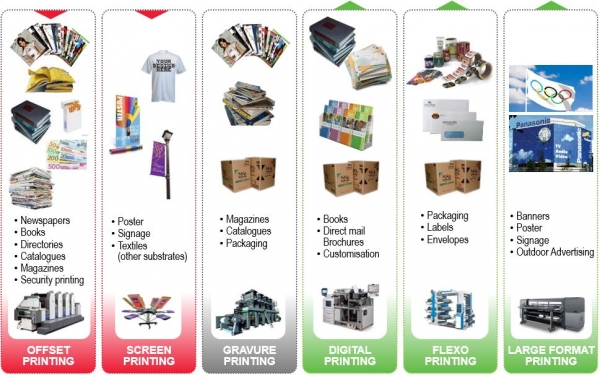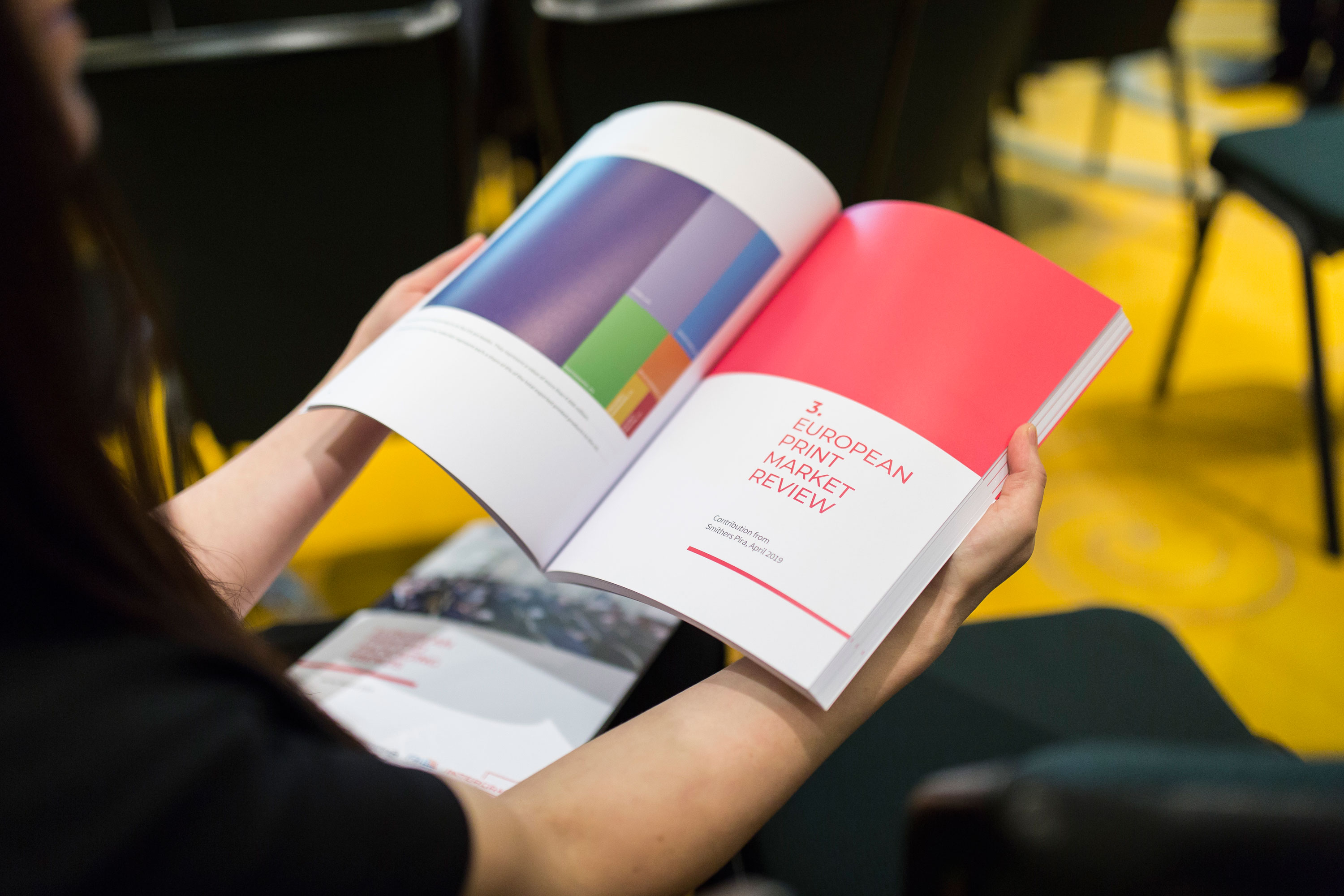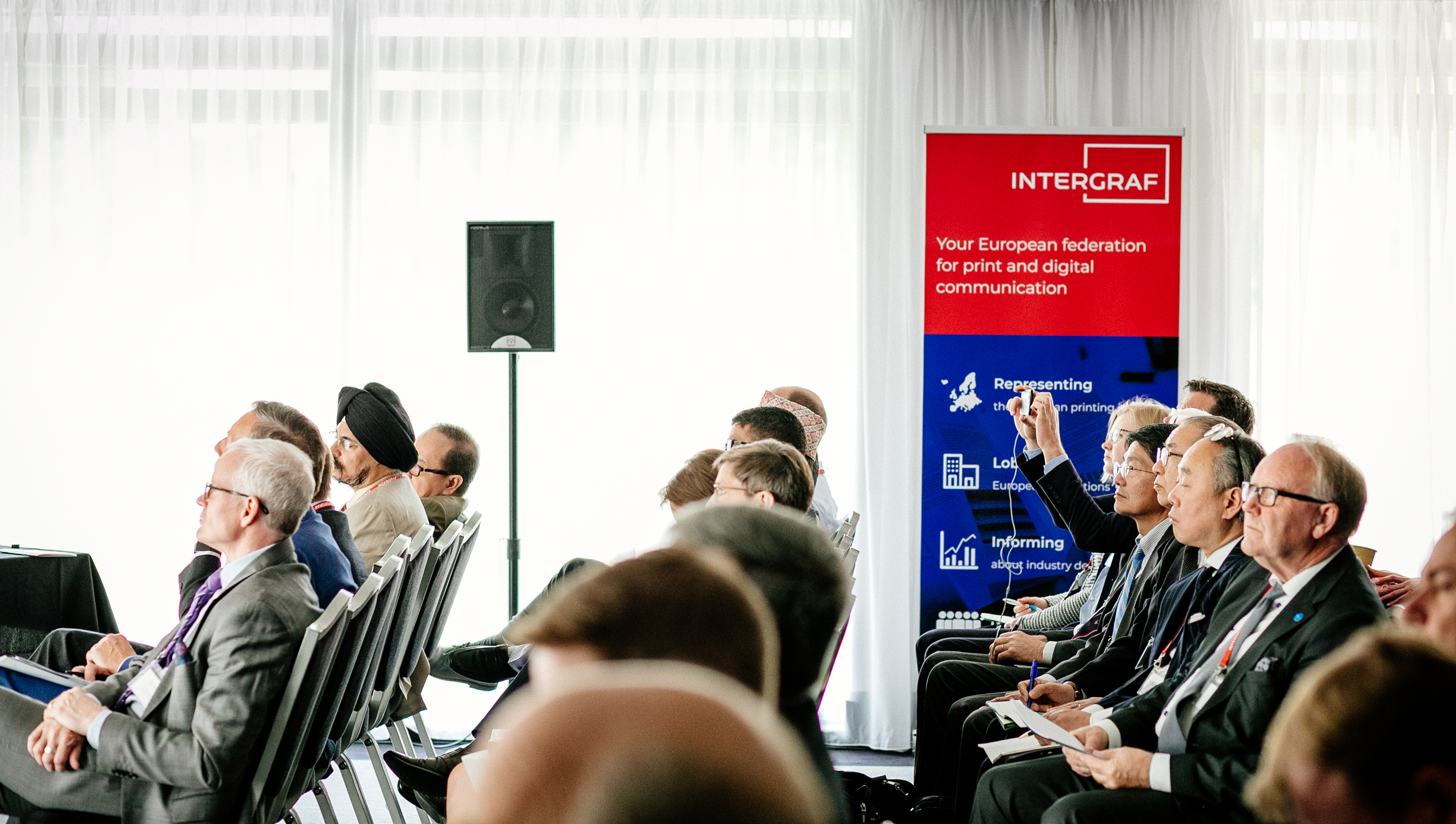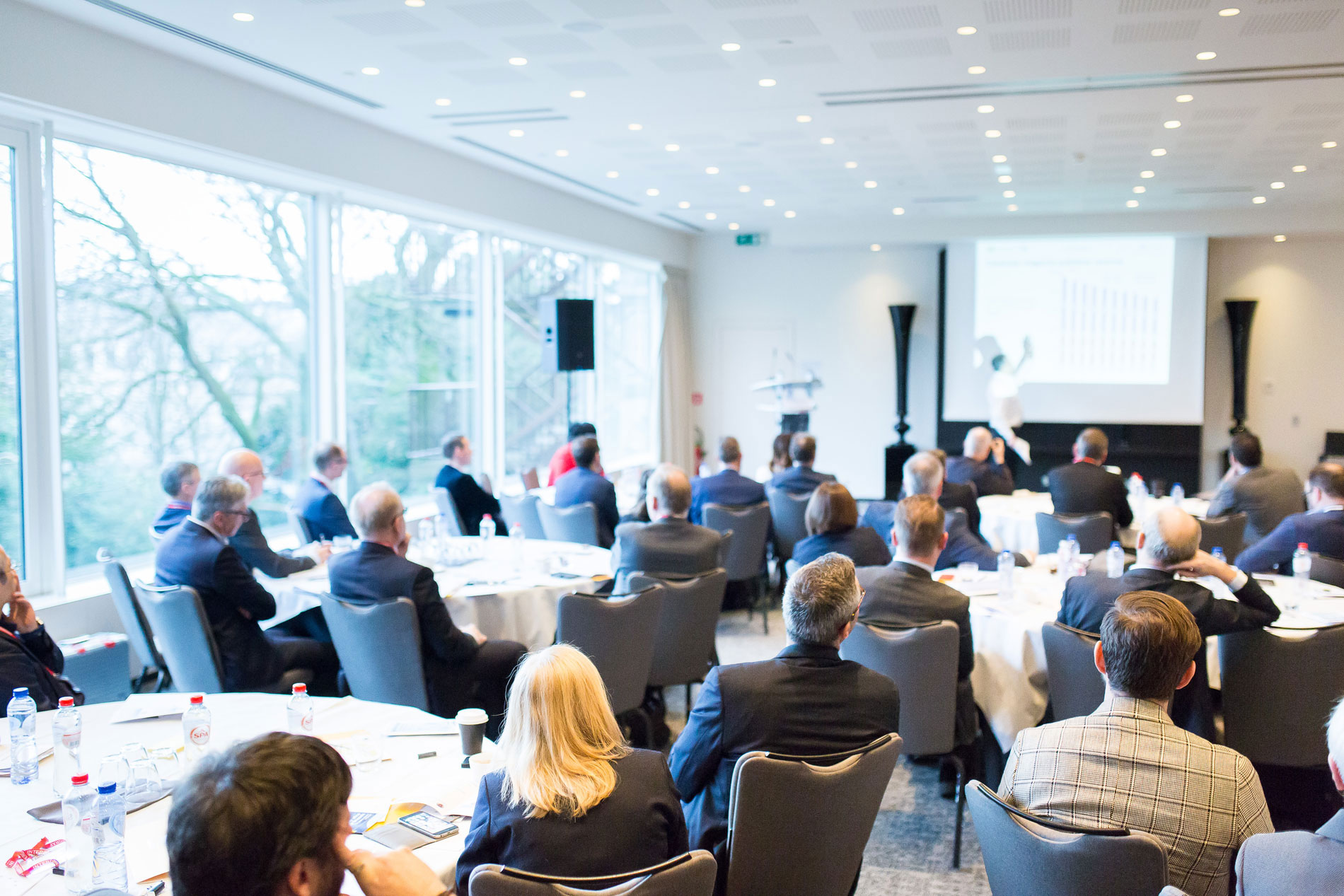Techniques and Products

Techniques and Products
Offset printing
Offset printers transfer (“offset”) an inked image from a plate onto a rubber blanket, which is then transferred onto the printing surface. Offset printers can be sheet-fed or web-fed. Web-fed printers can be heatset or coldset. Offset is often used to produce large volumes of high quality prints.
Screen printing
Screen printers transfer ink onto a substrate (textiles, ceramics, wood, paper, glass, metal or plastic, for example) using a mesh. Certain areas are made impermeable using a blocking stencil. Different colours are printed one at a time.
(Roto)gravure printing
Gravure printing is a type of intaglio printing process, which involves engraving the image to be printed onto a cylinder. Cylinders are usually made from copper-plated steel which is then chrome-plated after being engraved. Each colour is printed separately and must dry before another is added.
Digital printing
Digital printing refers to large format and/or high volume laser or inkjet printers which print orders from a digital source (e.g. a personalised photo book which a customer has designed themselves online). Digital printing is often used to fulfil orders of a smaller volume, on-demand or including personalisation.
Flexographic printing
Flexo printers use a flexible relief plate to print on a wide variety of substrates (including those which are non-porous like plastic). A different plate must be made for every colour used. Flexo printing is often used for food packaging.
Large format printing
Large format printers print products which are too large for most other printing presses. Sizes vary and large format printers use a variety of different technologies to print on various substrates, rather than individual sheets.






